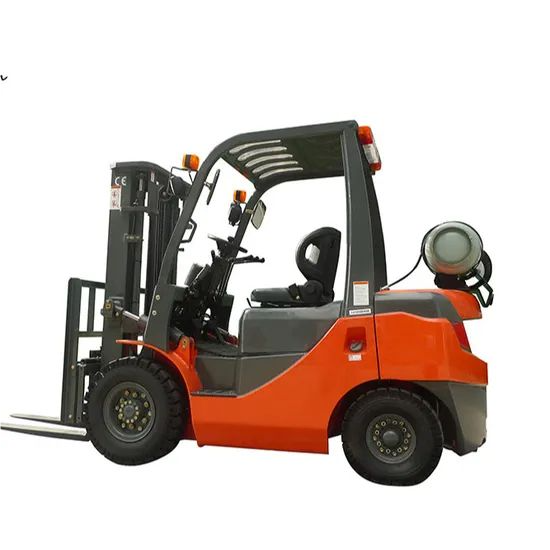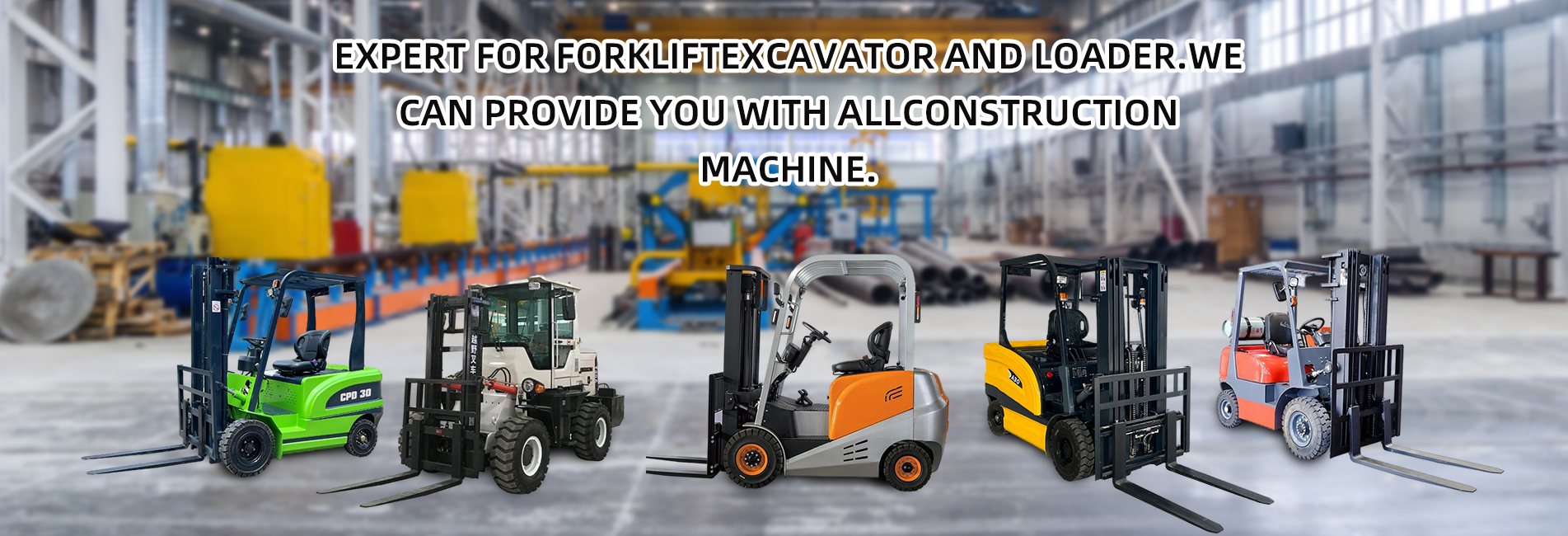LPG forklifts are industrial vehicles that use liquefied petroleum gas (LPG) as fuel. Here is a detailed introduction to them:
Working Principle
- Fuel Supply: LPG is stored in steel cylinders. Before starting the forklift, the manual switch at the outlet of the cylinder is turned on. The liquid LPG will pass through the filter/vacuum shut-off valve, which removes impurities from the liquid LPG and cuts off the LPG flow when the internal combustion engine stops running.
- Vaporization and Pressure Reduction: When LPG flows to the vaporizer/regulator, it is heated and vaporized into a gaseous state, and the pressure is reduced twice to meet the pressure requirements during the operation of the internal combustion engine.
- Mixing and Combustion: The gaseous LPG enters the LPG mixer, mixes with clean air in a certain proportion to form combustible gas, and then enters the engine combustion chamber, enabling the engine to operate normally and do work externally.
Performance Characteristics
- Power Performance: LPG forklifts have stable and continuous power output, providing sufficient power to meet material handling needs. Their engine power and torque can adapt to the lifting and handling of goods of different weights. Some models have a climbing capacity of up to 25%, allowing them to work easily on sloped sites such as warehouse ramps and loading/unloading platforms.
- Economic Performance: Compared with gasoline forklifts, LPG forklifts have lower fuel costs. Generally, 15kg of liquefied gas is equivalent to 20 liters of gasoline. Moreover, LPG produces little carbon deposition during combustion, which can extend the service life of the engine, prolong the service time of engine oil, and save 50%-80% of engine maintenance costs.
- Environmental Performance: LPG forklifts have good exhaust emissions, with significantly less carbon monoxide (CO) emissions than gasoline engines. The emissions of common pollutants are reduced by 60%-80%, making them suitable for indoor operations with high environmental requirements and places with strict environmental protection standards.
- Safety Performance: LPG has a higher ignition point than gasoline and a large latent heat of vaporization, which has a self-cooling effect and enhances safety. In addition, LPG systems are usually equipped with safety valves that can release pressure for protection according to pipeline pressure, and the steel cylinders can optionally be equipped with liquid flush valves to prevent pipeline damage caused by accidents.
Applicable Scenarios
- Logistics and Warehousing: In warehouses, logistics centers and other places, LPG forklifts can quickly load, unload, handle and stack goods. Their good maneuverability and climbing ability can adapt to different shelf layouts and site conditions.
- Manufacturing Industry: In factory workshops, they are used for the transportation of raw materials, semi-finished products and finished products, and can efficiently transfer materials between production lines, warehouses and workshops to meet the material supply needs in the production process.
- Ports and Terminals: Although large containers in port operations are usually handled by heavy-duty diesel forklifts or other professional equipment, LPG forklifts can be used for handling and short-distance transportation of some small goods and bulk cargo, as well as sorting and stacking goods in terminal warehouses.
- Indoor and Outdoor Mixed Environments: Due to their relatively clean emissions, they can be used both in indoor environments such as warehouses and workshops, and in outdoor environments such as loading/unloading yards and freight yards. Unlike diesel forklifts, they are not limited by indoor ventilation conditions and have stronger environmental adaptability.
Maintenance
- Regular Inspection: Regularly inspect various components of the LPG forklift, including the engine, hydraulic system, electrical system, tires, etc., to ensure their normal operation. Check whether the valves and pipelines of the LPG cylinder have leakage, and whether the safety valve works normally.
- Cleaning and Maintenance: Keep the forklift clean, regularly clean the dust and debris on the body, forks, door frame and other parts to prevent them from entering the internal components and causing wear or blockage. Clean the engine radiator to ensure the normal operation of the engine cooling system and avoid engine overheating.
- Replacement of Components: According to the frequency of use and working environment of the forklift, replace vulnerable parts such as air filters, oil filters, spark plugs, and hydraulic oil in accordance with the maintenance cycle recommended by the manufacturer to ensure the performance and reliability of the forklift.


